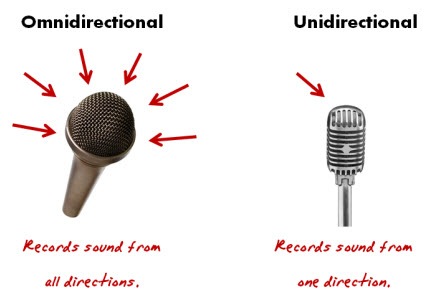How To Record Clear Audio On Laptop
Good audio is critical to your elearning success. You might be a great instructional designer and create the most engaging courses possible. But it all falls apart if the audio quality in your course is not very good.
In an earlier post we looked at when it makes sense to consider paying for professional narration. If you have the money, this is a viable option. However, many of you are like Old Mother Hubbard and your cupboard is bare. If you do have a limited budget (or you want to do the narration yourself) then here are some tips to help you do the best job possible.
Today we'll look at the microphone and recording environment. And in a follow up post, we'll explore ways to get the best sounding narration. All of the mic links go to Amazon, but you can purchase them anywhere.
1. Invest in a good quality microphone
When it comes to microphones, you typically get what you pay for. A good mic is going to give you good audio quality. This isn't to say that you can't make do with an inexpensive microphone. I've worked for plenty of organizations that had no money and forced me to buy my microphones at an unnamed electrical store. For the most part, they worked fine, especially if you follow some of the tips below.
But the truth is that when you compare the acceptable low-quality audio with similar narration recorded with a better microphone, there is a noticeable difference. The good news is that you don't have to spend a lot to get a decent microphone for recording narration. I've had success with a Plantronics headset and my Samson desktop mic. I think the Blue Snowball mic looks cool and it has also gotten very good reviews from those I know who use it.
Personally, I prefer a desktop mic because it gives me more control over the audio quality. Plus, I find it kind of gross sharing a headset mic if I have to record someone else. But that's just me. Some of you grew up in the 60's and probably don't mind sharing mics. 🙂

When choosing a microphone, your best bet is to go with a unidirectional mic. It records sound from one direction. This is great for recording narration because it only picks up the sound coming from the narrator, so you won't get a lot of the ambient noise.
I just recently purchased the Samson Go Mic (in the picture below). I love it. The audio quality is great. It only costs about $50 and it had a three way recording switch so I can record omni- or uni-directional. It's definitely worth the price.

Here's a test I did of the Go Mic. And here are a couple of demos that show the difference between a headset and desktop mic.
2. Maintain a consistent environment.
In an ideal world, you have a recording studio where you can control all of the sound. But since it's hard to get your boss to fork over $5 for a stock image, you might not convince him to provide the money for a recording studio. In that case, you're going to have to get creative when you record.
The more you control the recording environment the better quality audio you can record. One key is to develop a consistent routine for recording. It never fails that you'll have to do retakes at a different time. By maintaining a consistent environment and procedures you're better able to match the audio quality.
- Try to use the same room and maintain the same settings on your computer and the microphone set up.
- If you're using a desktop microphone, use a mic stand and measure the recording distance so that the next time you record you have the same set up.
- Use a screen to help prevent the popping p's that plague so many amateur recording sessions. You can even make your own in no time and little cost.

3. Get rid of as much of the ambient noise as you can
Unless you're a member of Quiet Riot, you want to get rid of the noise. There's very rarely a time when there is complete silence. This will be very apparent as you listen to your recording and start pick up all sorts of noise. In fact, there are some organizations that actually pipe in "white noise" to make it easier to concentrate and be less distracted by surrounding conversations.
In either case, you want to get rid of the noise you have control over.
- Unplug office machines. Turn off fans and air conditioners.
- Place your microphone away from your computer. You might not realize it, but your computer makes a lot of fan noise (not cheers as in celebration of you, but the actual fan that keeps the PC cooled).

- Tell everyone around you to be quiet. Put signs on the door. Hire an airplane with one of those banners to fly by your office telling people to keep it down. Do whatever you have to do to get rid of the noise. If that doesn't work, consider the Hume technique. It's based on actor Theodore Hume's approach to quieting the recording environment. It's a subtle, yet effective approach. It definitely gets the point across.
4. Dampen the sound
In a recording studio, the walls are designed to absorb the sound waves. You can do something similar. In addition to sucking the life from your bones, cubicle walls are designed to absorb sound. In fact, I'm generally pleased with my audio recordings and I just record it in my home office which has a small cubicle set up.
We once converted a storage closet into a makeshift recording room. We placed rails on the walls and hung some blankets from them. This also came in handy in case we were stuck in the building overnight.
I also know some people that built a portable studio using a PVC pip frame and curtains. They could quickly assemble the frame and then hung the curtains to it using shower curtain rings.

Another trick is to make a portable sound booth like the image above. Of course, you could always buy a one for about $40 if you're not comfortable with your knife handling skills.
Keep in mind, you're building rapid elearning courses and not producing sound for a Hollywood production so you don't need to be an audio expert. But you should learn a enough about audio and how to record to do a good job. This blog post is a good start, but it's just the beginning.
Next week week we'll look at how to do your own narration. In the mean time, what are some other tips about microphones and the recording environment? Also, what books or other resources would you recommend for those who wanted to learn more? Feel free to share them by clicking on the comments link.
Free E-Learning Resources
 |  |  |
| Want to learn more? Check out these articles and free resources in the community. | Here's a great job board for e-learning, instructional design, and training jobs | Participate in the weekly e-learning challenges to sharpen your skills |
 |  |  |
| Get your free PowerPoint templates and free graphics & stock images. | Lots of cool e-learning examples to check out and find inspiration. | Getting Started? This e-learning 101 series and the free e-books will help. |
How To Record Clear Audio On Laptop
Source: https://blogs.articulate.com/rapid-elearning/4-simple-tips-for-recording-high-quality-audio/
Posted by: edwardshimenclayes.blogspot.com

0 Response to "How To Record Clear Audio On Laptop"
Post a Comment